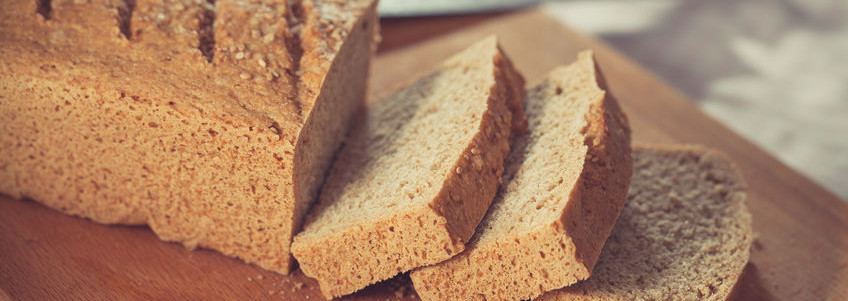
- Medical: Gluten intolerances, celiac disease, wheat allergies. Several studies confirm an increase of these health conditions in the population of developed countries in the last years.
- Newer generations: There has been a steady increase in the consumption of more natural and clean label products derived from alternative grain (non-wheat) sources. This is being triggered by younger generations (Millennials and Gen Z) seeking a healthy and responsible nutrition.
The production of gluten-free baked goods is challenging. It requires several adjustments in both formula and processing, including the bake cycle. There are three main variety groups of interest for gluten-free products:
- Gluten-free cookies
- Gluten-free chemically-leavened and batter-based products (e.g. cakes, muffins)
- Gluten-free yeast-leavened products (e.g. bread, buns)
Gluten-free bread formulation vs. traditional
Baking gluten-free products is a difficult task. It requires a thorough understanding of the ingredients used to replace wheat gluten-proteins functionality and how these affect the product.
During gluten-free bread formulation, you must balance the ingredients that provide gas retention through building viscosity and structure/crumb setting during baking. These ingredients are non-wheat cereal flours, gums, modified starches and protein sources.
The following is a regular gluten-free bread formulation (ingredients based on total flour weight*):
- White rice flour (35.0%)
- Potato starch (30.0%)
- Corn flour (23.0%)
- Soya four (4.0%)
- Nonfat dry milk (4.0%)
- Egg powder (dried whole eggs) (4.0%)
- Salt (1.5–2.0)
- Yeast (ADY) (1.5–2.0)
- Sugar (refined, granulated sucrose) (1.0–5.0)
- Xanthan gum (1.0–2.0)
- Water (100.0–110.0)**
- Transglutaminase (10 enzyme Units/g of crude protein in recipe)
*Total flour (100% baker’s): white rice flour, potato starch, corn flour, soya flour, milk solids, dried eggs.
**High water absorption levels create a stiff, thick batter or a very loose dough with optimum viscosity to stabilize air bubbles. Such levels are needed to properly hydrate the very hygroscopic starches and gums present in formula.
Baking gluten-free bread
Baking temperatures for gluten-free products are similar to conventional bread making processes. However, bake times are significantly longer. This is mainly due to the high water absorption levels and high starch content of gluten-free bread formulas.
Here are a few areas to pay attention to:
Gelatinization
It is important that gelatinization and the pasting of starches and gelling of gums in the formula occur after maximum expansion (oven spring). This is how you’ll yield optimal volume and crumb texture. If gelatinization and pasting occur too early, the starch causes the viscosity to build before the optimal cell structure and expansion have been achieved, resulting in a dense crumb. If the crumb sets too late, large voids occur in the crumb because expansion is excessive.
Exercising Bake Cycle Control
Visually managing yeast kill and gelatinization is straightforward via thermal profiling tools that collects time-temperature data from 5 reliably repeatable dough depths and rises with oven spring. The graphic result are automatic display of percent-of-bake time for attainment of these S-Curve parameters including arrival at gluten-free formulation appropriate temperature values from those 5 depth locations.
Bake Time and Thermal Profiling
Baking to good crust browning (common end point for conventional breads) is not often a reliable means to judge the bake time of gluten-free bread. It is very important to bake the product all the way to the center to ensure that the crumb structure sets and kill-step is achieved. Underbaking may cause serious shrinkage and side-wall collapse due to insufficient crumb set.
Once again, replacing guess work with reliably repeatable data ensures that Arrival to baking temperature at all dough depths ensures that enough time remains in the oven to achieve optimal crumb set and texture with the right amount of moisture for a long shelf life.
Running a thermal profile for a gluten-free bread and other bakery products can become a very powerful tool for quality assurance and shelf-life extension of the finished products. By running a thermal profile, you can pinpoint these aspects and optimize your product and exert better control of the baking process.

